While I wait for my Calmer to arrive (I went with Slosh, a dark slatey blue - at least according to my monitor), I've started to plot out my idea. My inspiration comes from a washcloth that I knit a while back:
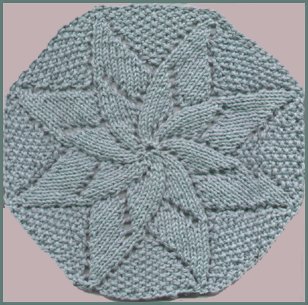
That's the pattern picture, not my own version, but mine looked very similar. As I worked on it, I thought, "wouldn't this look great plastered onto the back of a cami?"
And so an idea was born. The washcloth is knit from the inside-out, and I've seen some sweater patterns that start as circles and grow out from there, but most of them are shrugs or cardigans, meant to be loose-fitting. What I want is a close-fitting top, where all the shaping is carefully planned and defined, and I don't think this would be possible if I knit the whole thing starting from a point and working outwards.
My next thought was that I could knit the cami in a standard, bottom-to-top manner, and leave an octagonal hole. Then I could knit the washcloth separately and seam it in. This would probably work, but the seaming could be tricky. I don't like tricky seams. Instead, I thought, I could leave the same octagonal hole, then pick up stitches all around the perimeter, and work the washcloth pattern from the outside-in.
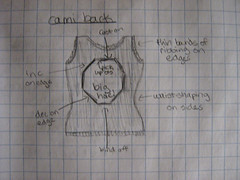
This would require me to invert the pattern. I'm not sure why I thought it would be a piece of cake, but... really, not so much. I started by charting it as written. Then, as a first attempt, I rotated it 180 degrees, replaced all the decreases with yarnovers, and replaced the yarnovers with decreases, using left-slanting or right-slanting ones according to what looked correct on the chart. I resolved a minor issue of having to add additional "no stitch" boxes, and then I knit 2 wedges using some cheap acrylic. (I like to do technique swatches in scrap yarn, and save my good yarn for swatches relating to gauge, stitch definition, drape, etc.)
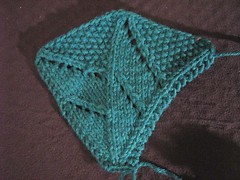
It's not bad, but there are quite a few things I'm not happy about here. (I added notes through Flickr, so if you click on the swatch picture, it will take you to the Flickr page and you can see my comments in more detail.) That's when the danger started. The more I looked at the original washcloth pattern, the more I realized that I wouldn't be happy merely with working it backwards. I imagined that the double flower resembled a sunflower, and wondered how I could make it more sunflower-esque. The simplest modification was to work the center circle in seed stitch to represent the seeds of the flower. (Seeds in seed stitch! Awesome!) The other modification I wanted to make was to separate the inner flower from the outer flower a little bit more; in the original, the inner flower is exactly the same shape as the outer one, only smaller. I wanted to reverse the swirly curve of the inner flower. Here's a bad sketch:
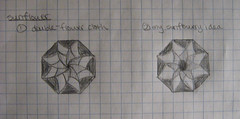
So I made swatch #2. Looking at it now, I guess I hadn't tried to flip the inner flower around yet. That came later.
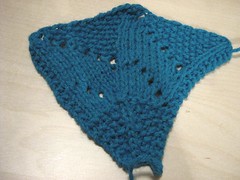
At this point, I started to get incredibly frustrated. All my good ideas seemed doomed to failure. Nothing wanted to line up the way I planned. I made one more attempt; I changed the outer triangles from seed stitch to stockinette, and I changed the seeds to reverse stockinette. (It made me very sad to not use seed stitch for the seeds, but it's nearly impossible to hide all those decreases in seed stitch.)
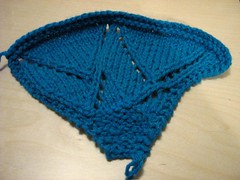
Getting better... but still not great. I didn't like the line running along the left of the outer petal that continued down to the flower's center. Also, I noticed that through all my modifications, I had lost the swirly nature of the original washcloth; all my lines seemed to have straightened out, and it looked more like a bunch of triangles than a flower. I went from frustrated to downright angry. I came close to tearing up my notes, cutting my swatches into shreds (remember, cheap acrylic), and abandoning the idea entirely. In a last-ditch effort, I turned to Google, to see if something similar had been done before. I couldn't find a single flower knit from the outside-in - perhaps that should have been a sign - but I did come across this:
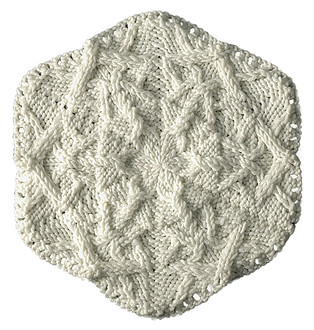
It's a snowflake that's knit from the outside-in, and it uses cables for texture. Cables! Brilliant!
I realized that I had become much more attached to the sunflower concept than I was to the swirly lace washcloth, so I studied some pictures of the flowers, tried to shove the washcloth pattern completely out of my mind, and made this sketch:
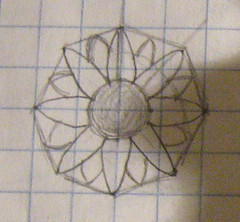
Using a combination of cables and decreases for shaping, I made a scaled-down swatch. I was downright sick of swatching (and if I never see turquoise acrylic again, it will be too soon) so not only is this not a full circle, but it also is much shorter than the actual flower on the cami would be.
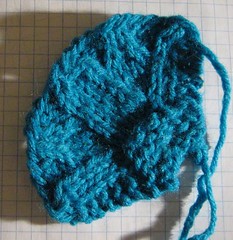
Ladies and gentlemen... or only ladies, as the case may be... we have a winner!!
I'm not quite done with it yet; given the angular spread of this swatch, I think I might have to turn my octagon into a hexagon and switch from eight large petals to six. Also, each petal here produces its own point, so with 6 of them, I'd have 12 points total, and I don't relish the idea of planning a 12-sided hole. I might be able to block it to a 6-sided shape, or maybe I can slip the small-petal stitches on the first round? I haven't figured that out definitively yet, but I'll keep working on it while I wait for my Calmer.
I'm calling this my Sunflower Cami, for obvious reasons. And please, please, don't ask me what the front is going to look like yet. I will probably break down in tears and throw something at you.
(Kidding! Mostly.)





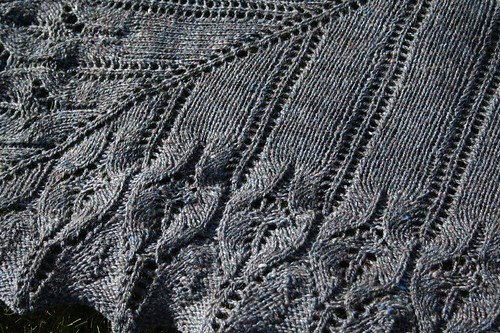






















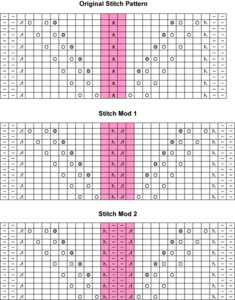
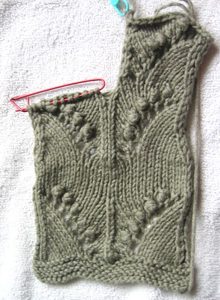
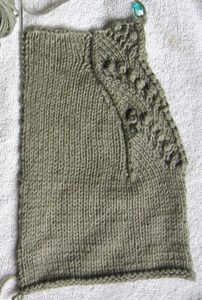
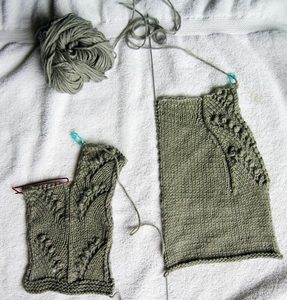
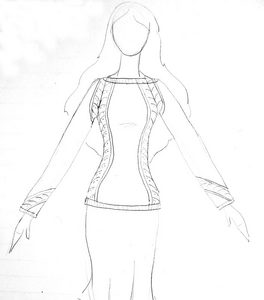
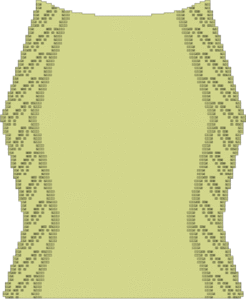



![[calpremiere.jpg]](https://blogger.googleusercontent.com/img/b/R29vZ2xl/AVvXsEiy0wh_95AcwniXEoBtZoHC2yUGJ2XuU8O_-D10FxvaeOSiaAAZM1J1JUHI-8zfGrMG6XFuO6WtsDA4bnq_jySFC87TnR_W_sP1M8F3Qm7KH-Rd4DMFp-C4FxTnvsq5uT1cptxd-XgQHng/s1600/calpremiere.jpg)
![[calpremieremove.gif]](https://blogger.googleusercontent.com/img/b/R29vZ2xl/AVvXsEjp5NGvZgOE3ghqG0Ksh0c6lFPEO_0hIHk4O2P5pWZ0wWdFS4L7lVQCH-6GkDPyynDaflFO1bc7V2YGCat9AKdSoPMgef2GrBPfe_b6l-llR-Ls7M-2KzYlwBBU_ehpWtIBFM6cdbKlA84/s1600/calpremieremove.gif)